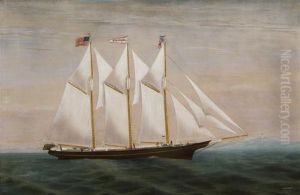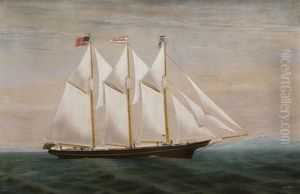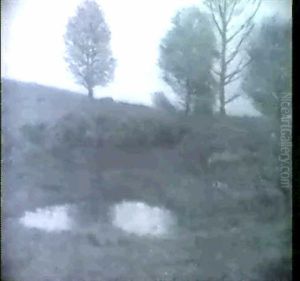William Bradley Eaton Paintings
William Bradley Eaton was an American artist, best known for his landscape paintings. Born on November 11, 1860, in Albany, New York, Eaton developed an interest in art at an early age. He pursued his artistic education at the National Academy of Design in New York City, where he honed his skills and became immersed in the art scene of the late 19th century.
Eaton's work was heavily influenced by the Hudson River School, a group of American landscape painters who were inspired by romanticism. His paintings often depicted the natural beauty of the American Northeast, particularly the Adirondack Mountains and the New England countryside. Despite being influenced by the Hudson River School, Eaton also incorporated elements of Tonalism into his work, a style characterized by soft focus and an emphasis on mood and shadow, which became popular in American art circles in the 1880s and 1890s.
Throughout his career, Eaton exhibited his work at various prestigious institutions, including the National Academy of Design and the Boston Art Club. His landscapes were highly regarded for their serene beauty and his ability to capture the changing effects of light and atmosphere. Although Eaton was a very private person and not much is known about his personal life, his paintings continue to be appreciated for their quiet contemplation and harmonious color palettes.
William Bradley Eaton passed away on February 7, 1934, in Bronxville, New York. Today, his work is part of several collections and continues to be studied and celebrated for its contribution to American landscape painting. Eaton's legacy is that of an artist who captured the spirit of the American landscape during a time of significant change and development in the country's art history.


